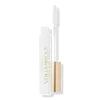What's inside
What's inside
 Key Ingredients
Key Ingredients

 Benefits
Benefits

 Concerns
Concerns

 Ingredients Side-by-side
Ingredients Side-by-side

Water
Skin ConditioningOryza Sativa Cera
Skin ConditioningCopernicia Cerifera Cera
EmollientCera Alba
EmollientStearic Acid
CleansingCandelilla Cera
EmollientTriethanolamine
BufferingPalmitic Acid
EmollientAcacia Senegal Gum
MaskingPanthenol
Skin ConditioningSodium Polymethacrylate
Emulsion StabilisingHydroxyethylcellulose
Emulsion StabilisingPropylparaben
PreservativePEG/PPG-17/18 Dimethicone
EmulsifyingMethylparaben
PreservativeSimethicone
EmollientRayon
Polyquaternium-10
Tocopheryl Acetate
AntioxidantPolycaprolactone
StabilisingWater, Oryza Sativa Cera, Copernicia Cerifera Cera, Cera Alba, Stearic Acid, Candelilla Cera, Triethanolamine, Palmitic Acid, Acacia Senegal Gum, Panthenol, Sodium Polymethacrylate, Hydroxyethylcellulose, Propylparaben, PEG/PPG-17/18 Dimethicone, Methylparaben, Simethicone, Rayon, Polyquaternium-10, Tocopheryl Acetate, Polycaprolactone
Water
Skin ConditioningPolybutene
Paraffin
PerfumingPotassium Cetyl Phosphate
EmulsifyingCera Alba
EmollientCopernicia Cerifera Cera
EmollientCopernicia Cerifera Wax
Steareth-2
EmulsifyingCetyl Alcohol
EmollientAlcohol Denat.
AntimicrobialPhenoxyethanol
PreservativeHydroxyethylcellulose
Emulsion StabilisingAcacia Senegal Gum
MaskingPanthenol
Skin ConditioningEthylenediamine/Stearyl Dimer Dilinoleate Copolymer
Skin ConditioningCaprylyl Glycol
EmollientHydrogenated Jojoba Oil
AbrasiveHydrogenated Palm Oil
Emollient2-Oleamido-1,3-Octadecanediol
Skin ConditioningDisodium EDTA
BHT
AntioxidantRosa Canina Fruit Oil
EmollientStearyl Alcohol
EmollientMyristyl Alcohol
EmollientPentaerythrityl Tetra-Di-T-Butyl Hydroxyhydrocinnamate
AntioxidantPropylene Glycol
HumectantPropyl Gallate
AntioxidantCitric Acid
BufferingWater, Polybutene, Paraffin, Potassium Cetyl Phosphate, Cera Alba, Copernicia Cerifera Cera, Copernicia Cerifera Wax, Steareth-2, Cetyl Alcohol, Alcohol Denat., Phenoxyethanol, Hydroxyethylcellulose, Acacia Senegal Gum, Panthenol, Ethylenediamine/Stearyl Dimer Dilinoleate Copolymer, Caprylyl Glycol, Hydrogenated Jojoba Oil, Hydrogenated Palm Oil, 2-Oleamido-1,3-Octadecanediol, Disodium EDTA, BHT, Rosa Canina Fruit Oil, Stearyl Alcohol, Myristyl Alcohol, Pentaerythrityl Tetra-Di-T-Butyl Hydroxyhydrocinnamate, Propylene Glycol, Propyl Gallate, Citric Acid
Ingredients Explained
These ingredients are found in both products.
Ingredients higher up in an ingredient list are typically present in a larger amount.
Acacia Senegal Gum has skin soothing, thickening, and formulation stabilizing properties. It comes from the Acacia tree that is native to sub-Saharan Africa.
Cera alba is beeswax, or the wax used by bees to make honeycombs. It is a texture-enhancer and emollient. A study from 2003 found beeswax to be a stronger emollient than ingredients such as petroleum jelly.
As an emollient, beeswax helps hydrate the skin by creating a barrier on top. This barrier traps moisture in.
Emulsifiers help prevent ingredients from separating. This helps create consistent texture.
The structure of beeswax is mainly long-chain alcohols and the esters of fatty acids.
There are three types of beeswax: yellow, white, and absolute. Yellow is pure beeswax taken from the honeycomb. White beeswax is created by filtering or bleaching yellow beeswax. Absolute beeswax is created by treating beeswax with alcohol. Beeswax used in cosmetics are purified.
Beeswax has been used throughout history and even in prehistoric times. Some common uses for beeswax still used today are making candles, as a waterproofing agent, and polish for leather.
Learn more about Cera AlbaThis ingredient comes from a palm tree native to Brazil. This ingredient is used to thicken texture and leaves behind a film when applied.
Hydroxyethylcellulose is used to improve the texture of products. It is created from a chemical reaction involving ethylene oxide and alkali-cellulose. Cellulose is a sugar found in plant cell walls and help give plants structure.
This ingredient helps stabilize products by preventing ingredients from separating. It can also help thicken the texture of a product.
This ingredient can also be found in pill medicines to help our bodies digest other ingredients.
Learn more about HydroxyethylcellulosePanthenol is a common ingredient that helps hydrate and soothe the skin. It is found naturally in our skin and hair.
There are two forms of panthenol: D and L.
D-panthenol is also known as dexpanthenol. Most cosmetics use dexpanthenol or a mixture of D and L-panthenol.
Panthenol is famous due to its ability to go deeper into the skin's layers. Using this ingredient has numerous pros (and no cons):
Like hyaluronic acid, panthenol is a humectant. Humectants are able to bind and hold large amounts of water to keep skin hydrated.
This ingredient works well for wound healing. It works by increasing tissue in the wound and helps close open wounds.
Once oxidized, panthenol converts to pantothenic acid. Panthothenic acid is found in all living cells.
This ingredient is also referred to as pro-vitamin B5.
Learn more about PanthenolWater. It's the most common cosmetic ingredient of all. You'll usually see it at the top of ingredient lists, meaning that it makes up the largest part of the product.
So why is it so popular? Water most often acts as a solvent - this means that it helps dissolve other ingredients into the formulation.
You'll also recognize water as that liquid we all need to stay alive. If you see this, drink a glass of water. Stay hydrated!
Learn more about Water